
Xray Image Of Wrist Joint Ap And Lateral View stock photo 486186990
Benoudina S, Normal radiographic anatomy of the wrist. Case study, Radiopaedia.org (Accessed on 05 Jan 2024) https://doi.org/10.53347/rID-43305
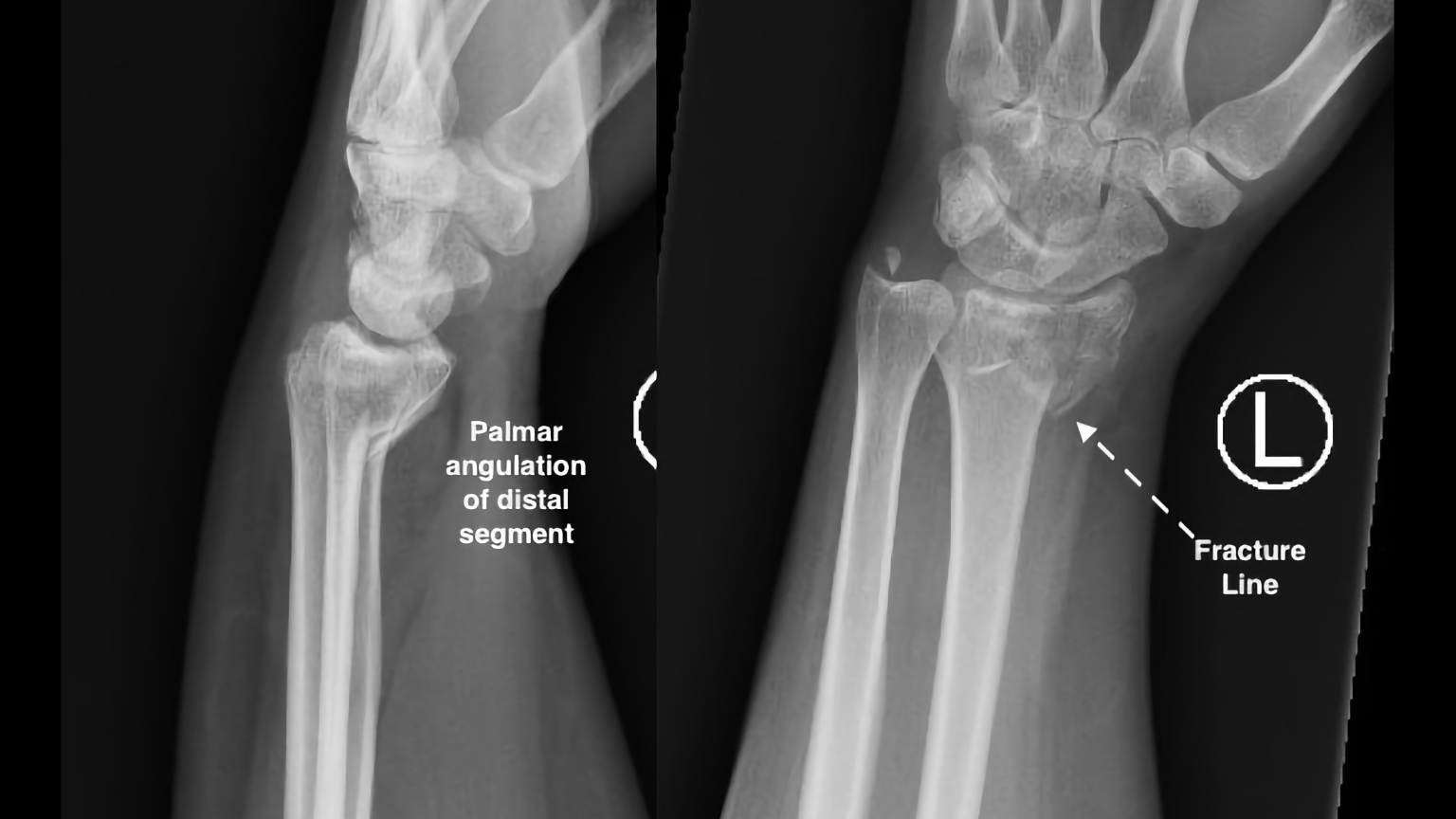
Wrist Xray Interpretation OSCE Guide Geeky Medics
The lateral wrist radiograph is requested for myriad reasons including but not limited to trauma, suspected infective processes, injuries the distal radius and ulna, suspected arthropathy or even suspected foreign bodies. What is probably more useful is remembering that a lateral wrist radiograph will not rule out a forearm fracture given the.
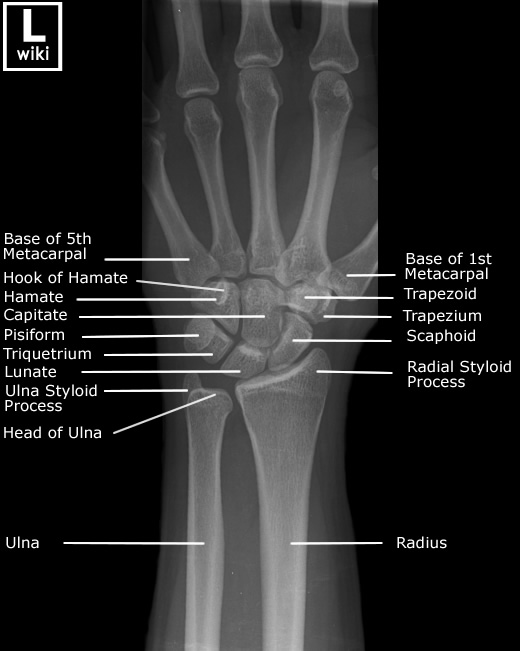
Wrist Radiographic Anatomy wikiRadiography
EMRad: Radiologic Approach to the Traumatic Wrist. This is EMRad, a series aimed at providing "just in time" approaches to commonly ordered radiology studies in the emergency department. When applicable, it will provide pertinent measurements specific to management, and offer a framework for when to get an additional view, if appropriate.

Wrist Examination & Pathology Module Don't the Bubbles
Citation, DOI, disclosures and article data. The wrist series is comprised of a posteroanterior, oblique, and lateral projection. The series examines the carpal bones that are consisting of the scaphoid, lunate, triquetrum, pisiform, trapezium, trapezoid, capitate and hamate. It also examines the radiocarpal and distal radioulnar joint along.
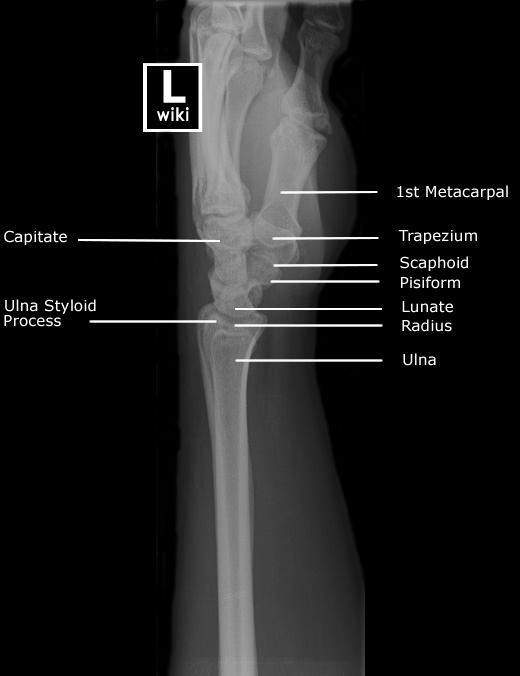
Wrist Radiographic Anatomy wikiRadiography
Zoe Little, specialty trainee 3 in trauma and orthopaedics, ; John Murphy, consultant orthopaedic surgeon; 1 Department of Trauma and Orthopaedics, Northwick Park Hospital, Harrow HA1 3UJ, UK; Correspondence to: zoe.little{at}doctors.org.uk
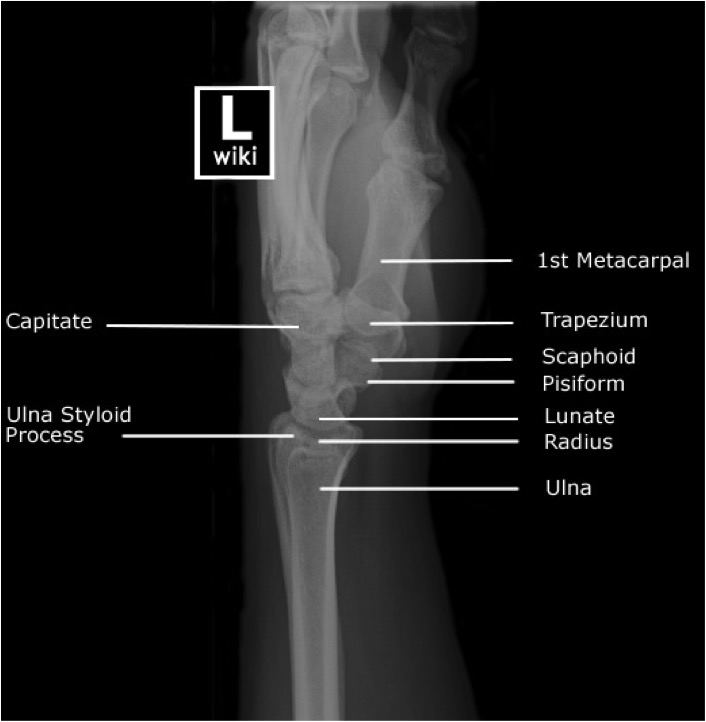
elbow x ray anatomy
Practical points. The aim of the horizontal beam lateral wrist is to avoid patient movement whilst achieving a diagnostic radiograph that rivals the quality of a walk in patient. This projection is paramount in the correct diagnosis of wrist fractures and consequently the patient's management. The tricky part of the projection is keeping the.

Wrist X Ray Anatomy The Anatomy Stories
In regards to the lateral view of the wrist, place your index finger on the radius and your middle finger on the ulna. From there, rotate the wrist laterally with your fingers on the radius and ulna. You will know that you have a perfect lateral when your index and middle finger overlap (Fig. 1). In doing so, you should obtain a consistently.

wrist anatomy carpal bones
The wrist is one of the most complex joints in the human body, allowing for stability during movement in all three cardinal planes of the human body. Categorically considered a hinge joint like the elbow, the wrist has additional planes of movement and rotation thanks to robust anatomy. Made up of eight carpal bones, the radius, ulna, and five metacarpals, the number of articulations and.
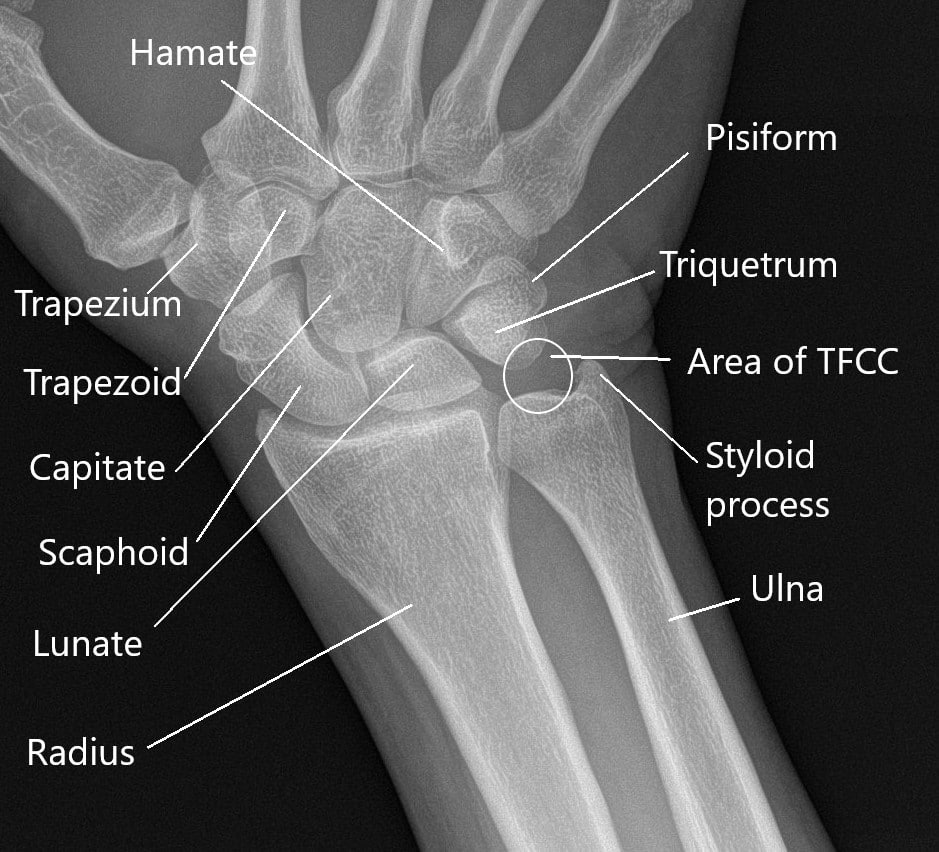
Causes and Management of Wrist Joint Pain Complete Orthopedics
no superimposition of triquetrum, lunate, or pisiform. Ulnar/radial deviation view. Positioning. patient. shoulder abducted 90° + elbow flexed 90° + forearm pronated + hand ulnarly vs. radially deviated. beam. aim at scaphoid. Indications. ulnar deviation = lateral wrist + scaphoid fracture.
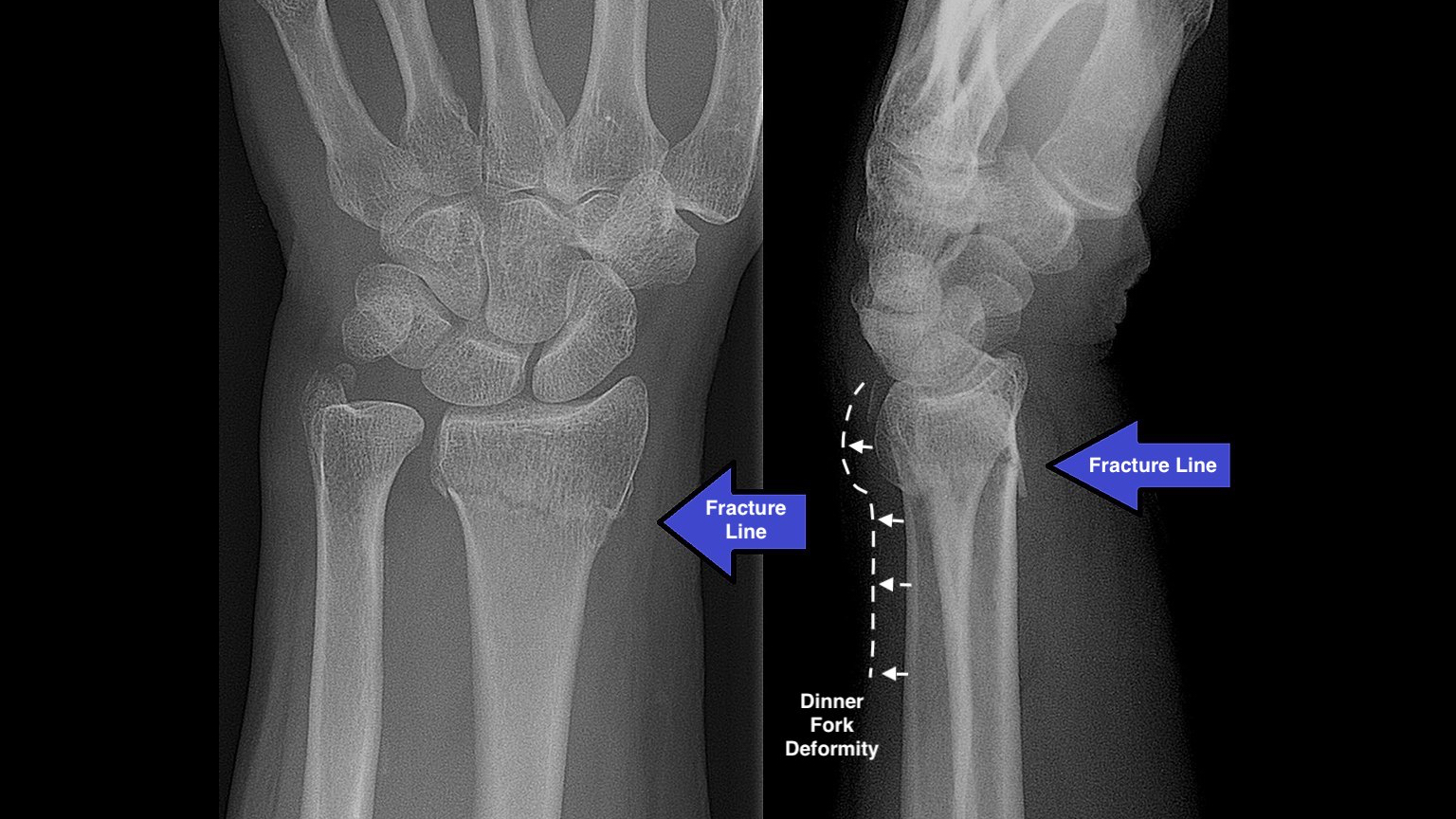
Wrist Anatomy X Ray Labeled
A wrist X-ray (radiograph) is a test that produces an image of the inside of your wrist. The image displays the inner structure ( anatomy) of your wrist in black and white. A wrist X-ray shows your two forearm bones (radius and ulna) and eight wrist bones (carpal bones). Your carpal bones are aligned in two rows of four bones each at the base.
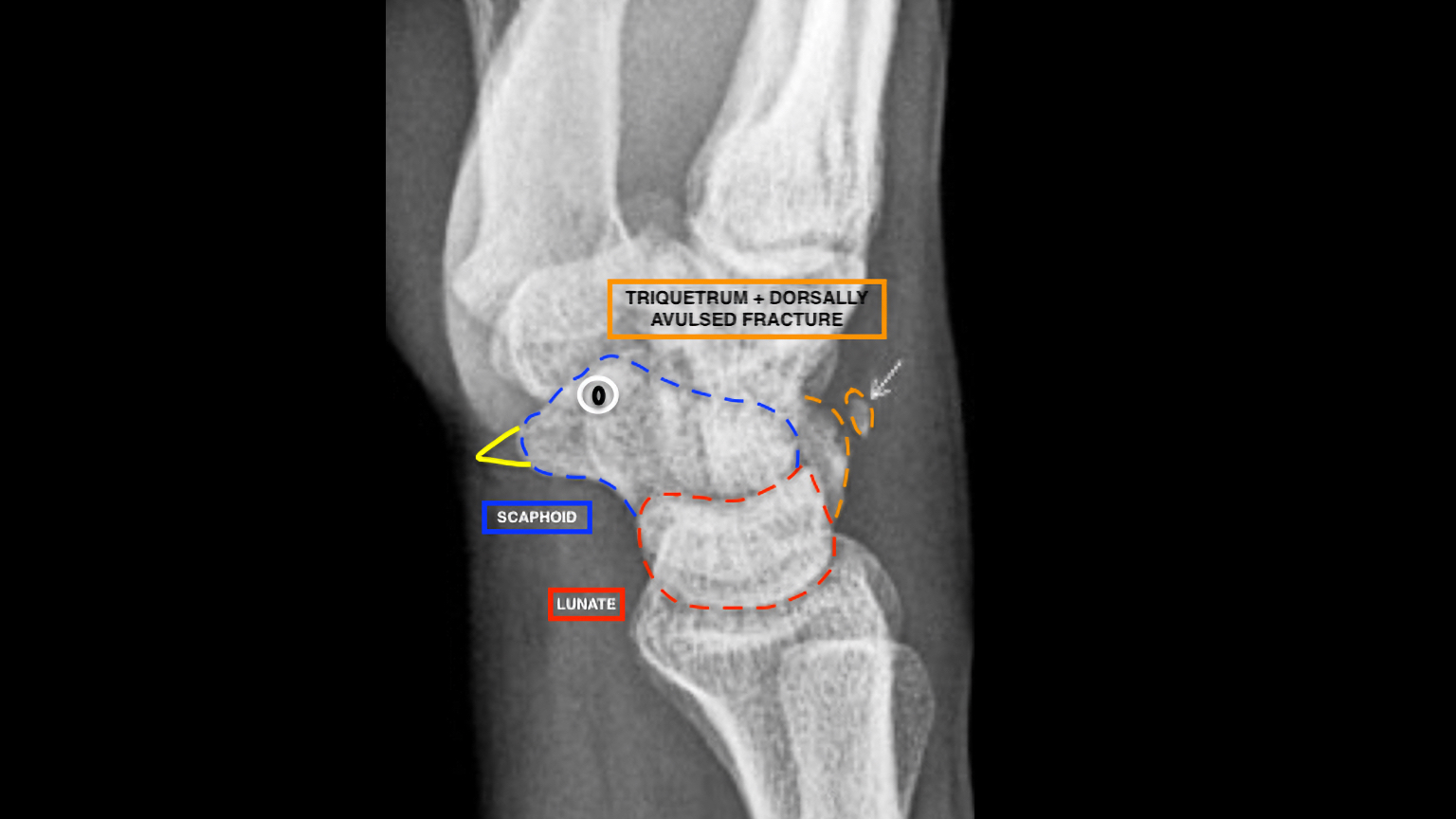
Wrist Xray Interpretation OSCE Guide Geeky Medics
AP. the distal radial articular surface should cup the carpals. the articular surface should get progressively more distal towards the radial styloid. radial inclination angle should be 15-25°. lateral. the radial surface should be smooth. there should be a palmar tilt to the articular surface. volar tilt should be around 10-25°.

Wrist Radiographic Anatomy
On the AP, the articular surfaces of the carpal rows should form three smooth lines. Trace each of the arcs and ensure that there is a 1-2 mm joint space between each of the carpal bones. If there is widening of the space between the scaphoid and lunate, think scapholunate dissociation. The joint space between the distal carpal row and the.
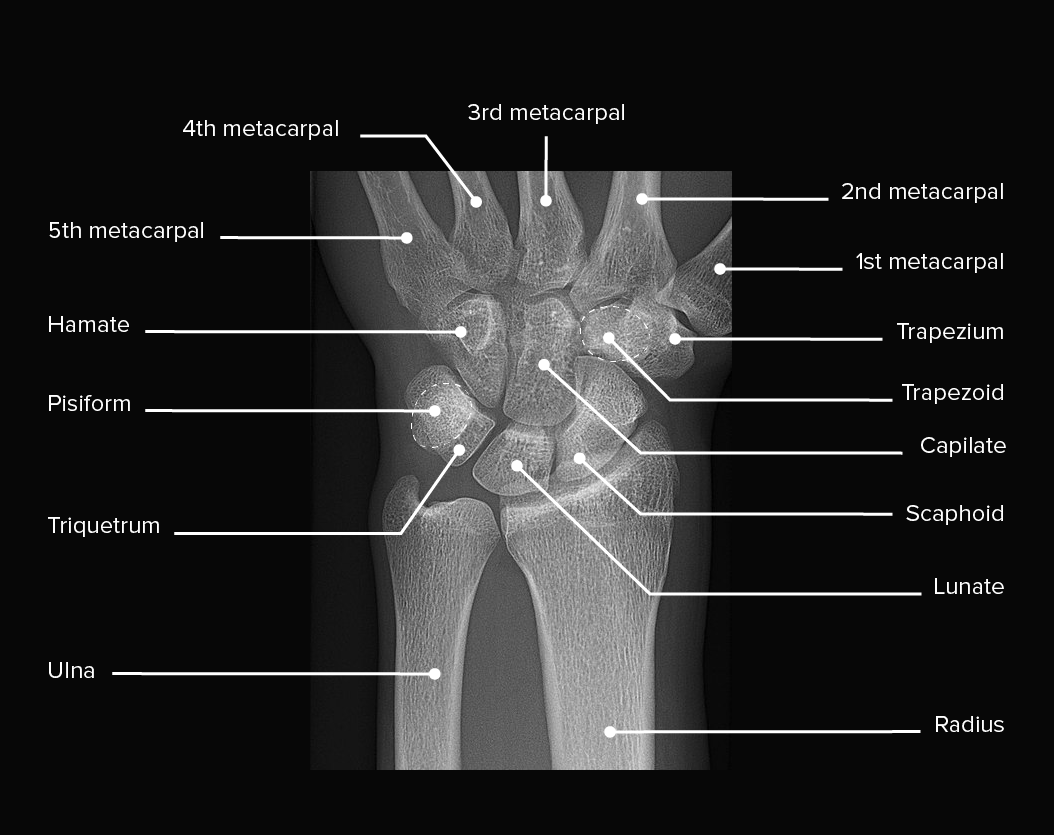
Wrist Joint Anatomy Concise Medical Knowledge
Aim: In standard lateral wrist radiographs, the radiocarpal joint is often obscured because of the angulation of the radial styloid process. A modified lateral projection at a 20° angle has been shown to demonstrate the distal radius in profile in postoperative patients without superimposing of the orthopedic hardware used in open reduction and internal fixation procedures over the wrist joint.

Lateral Wrist Xray Anatomy quiz [Video] Radiology imaging, Radiology
Lateral view. Lateral views of the wrist are technically challenging to interpret due to overlying bony structures.. This view is obtained by positioning the patient as follows:. pronated wrist (ulnar side of the fifth digit facing down onto the X-ray plate); thumb facing upwards; Normal findings: The long axis of the radius, lunate, capitate and the third metacarpal bone should align.

Lateral radiograph of the right wrist The BMJ
How to interpret radiographs of the adult wrist—normal anatomy and distal radial fractures It is important for all newly qualified doctors to be confident in interpreting radiographs of the adult wrist, especially in the setting of acute trauma. The wrist is a common site of musculoskeletal injury,1 usually caused by falling on an outstretched hand.2 Every year around 282 000 falls occur in.

Normal Anatomy of Lateral Wrist Radiograph PULSE MD
Pronator quadratus fascial plane . The pronator quadratus muscle extends across the volar surface of the ulna to insert on the volar and ulnar surfaces of the distal radius ( Figure 4-3 A ).The fascial surface of the muscle is outlined by a thin layer of fat that is visible on lateral radiographs of the wrist ( Figure 4-3 B ).Changes in the appearance of the pronator fascia plane are clues to.